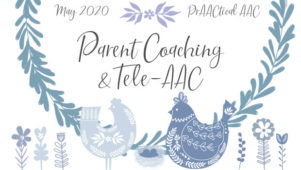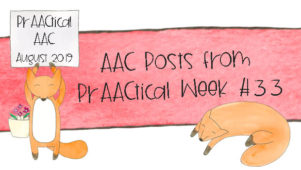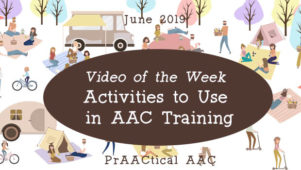How We Do It: Coaching AAC Use in the Natural Environment
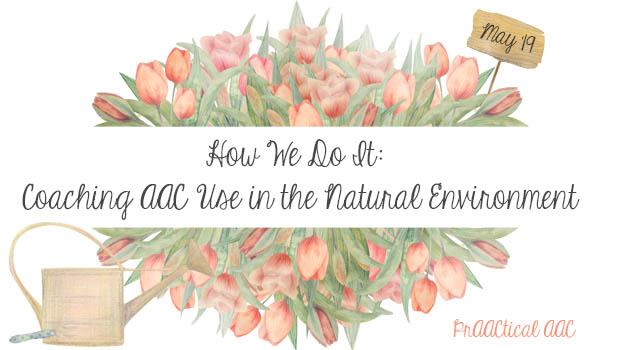
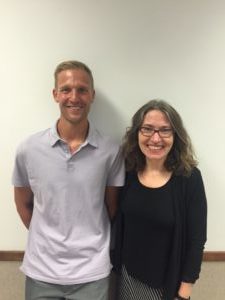 If it’s May, it must be Better Hearing and Speech Month (#BSHM), and we’re thrilled to kick off the festivities by two Illinois-based SLPs, Dr. Jill Senner and Matt Baud. They have a wealth of AAC experience and have generously shared their expertise here in several previous posts. Today, we welcome them back as they share some advice on helping staff use AAC in natural settings.
If it’s May, it must be Better Hearing and Speech Month (#BSHM), and we’re thrilled to kick off the festivities by two Illinois-based SLPs, Dr. Jill Senner and Matt Baud. They have a wealth of AAC experience and have generously shared their expertise here in several previous posts. Today, we welcome them back as they share some advice on helping staff use AAC in natural settings.
Enjoy!
:::::::::::::::::::::::::::::::::::::::::::::::::::::::::::::::::::::::::::::::::::::::::::::::::::
Put Me in, Coach: Coaching AAC Use in the Natural Environment
“Help, I already trained the team and the device is still not being used outside of my sessions.”
Sound familiar? We hear this a lot. This actually is quite common if one key training element is missing. In fact, without this critical instructional component, there’s only about a 5% chance that the strategies you’re teaching will actually be used in the natural environment. What is the essential ingredient to maximizing your training efforts? Read on to find out!
By now most of us recognize that communication partner instruction is a fundamental part of AAC implementation. Whether you’re working with classroom staff at school or directly with families at home or in a clinic, implementation features are as important as intervention features to establish evidence-based practice (EBP). In other words, to provide EBP, how you teach communication partners is as important as what you teach them.
The evidence suggests that the use of multiple training elements results in optimal learner outcomes. Perhaps you’re already including strategy description, strategy demonstration, verbal practice and controlled practice in your workshops or in-services. What on earth has been overlooked? Coaching! When trainers include coaching, research indicates that the use of targeted strategies in the natural environment can increase to about 95%!
Coaching involves going (virtually or in person) into the natural environment such as the home or classroom, observing the parent or school staff member, and providing performance feedback. Coaching is collaborative and developing a partnership with the person(s) you’re coaching is fundamental.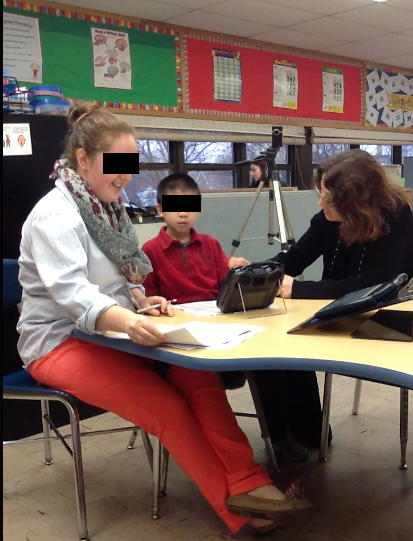
Coaching Tips
Get to know the person you’re coaching. Ask what his or her typical day is like. This will give lots of information on naturally occurring communication opportunities. Find out what the person already knows about AAC and what his or her primary concerns are. Perhaps ask, “What would you like to know about AAC?”
Offer choices. The individual receiving coaching has his or her own opinion regarding what activities, time of day, or what skills he or she wants to target first. Allow the individual to choose when possible.
Be an active listener. If the individual you’re coaching says something confusing like, “Johnny knows the device better than I do,” make sure you understand what the person is really trying to tell you. You can ask clarifying questions like, “Could you tell me more about that?” or try paraphrasing, “I think what you’re saying is that you need some time to learn where words are on the device. Is that right?”
Demonstrate the targeted strategy during a naturally occurring activity. Conducting a short “model lesson” is part of the coaching cycle. If you want to teach a parent to provide partner-augmented input (i.e., aided language input) during mealtime, first let them watch you model (for a brief period) at lunch. Then let them try the strategy while you to watch them.
Give precise and informative feedback. We use language from the SMoRRES mnemonic to provide communication partners feedback on PAI. This way we’re all using the same vocabulary and we can be precise with our feedback. For example, “I noticed that when Suzie pointed to the water fountain, you honored her request and modeled ‘want drink.’ Good use of respect and reflect.” Evaluative feedback like, “good job,” or “awesome” isn’t as helpful.
Encourage reflection. Ask questions like, “How do you think that went?” or “What do you think we need to work on next time?” to support communication partners in thinking about their own performance. If you have an idea, approach it collaboratively. For example, “What do you think would happen if you expanded (i.e., added a word or two) when Sophia says a single word on her device?”
Link the child’s positive response to the partner’s behavior. Often partners may be so focused on what they’re supposed to do with the device that they might not notice the effects of their strategy use on the child. When you observe the child communicating as a result of something the partner has done, point it out to the partner. For example, “Wow, when you handed Joshua the unopened juice box and provided an expectant pause, he asked you for help!”
Coaching Resources:
- Jim Knight and his colleagues at the Instructional Coaching group have a number of free coaching videos, presentations worksheets designed for school teams. (Check out their resources here.)
- Edutopia has numerous articles and videos to help with instructional coaching in schools. (Click here to visit their site.)
- The Hanen Centre has numerous resources on collaborating with parents. (Take a look at their resources here.)
Remember, the next time you’re planning a training, make sure to get out there and do some coaching!
Learn more from Jill and Matt here.
::::::::::::::::::::::::::::::::::::::::::::::::::::::::::::::::::::::::::::::::::::::::::::::::::::::::::::::::::::::::::::::::::::
Jill E Senner, PhD, CCC-SLP is a speech-language pathologist with over 20 years of experience working with children with complex communication needs. She is the owner/director of Technology and Language Center where she specializes in providing augmentative and alternative communication (AAC) and assistive technology (AT) services including assessment, consultation and training, and workshops/lectures. Dr. Senner has presented at numerous national assistive technology conferences and has taught graduate courses in AAC and swallowing disorders. She has published research in the areas of AAC, siblings and disability, and swallowing disorders in cerebral palsy.
Matthew R Baud, MS, CCC-SLP, has been working with AAC for over 15 years. He currently is the Assistive Technology Coordinator at Niles Township District for Special Education (NTDSE) performing evaluations, trainings and coaching communication partners. Matthew also has his own AAC private practice working with individuals with complex communication needs from birth through adulthood. He is an adjunct professor at Saint Xavier University where he teaches a graduate course in AAC and has presented at national and state conferences. Matthew has published research in the areas of AAC.
Filed under: Featured Posts, PrAACtical Thinking
Tagged With: coaching, Jill Senner, Matt Baud, partner training
This post was written by Carole Zangari

